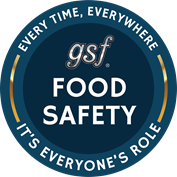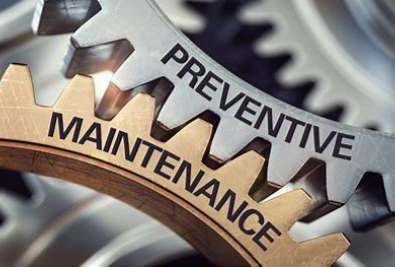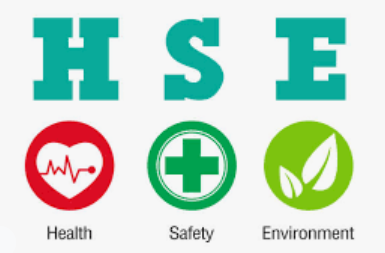Information
-
Facility
-
Value Stream/Department
-
Conducted on
-
Prepared by
-
Contact Number
-
Location
-
Each question needs to be answered as part of a review if the actual situation on the shop floor to ensure the accuracy and applicability of the results. If the are questions regarding specific findings during the audit the auditor must ensure to clarify findings with area management before determining compliance status and adding comments.
SECTION 1: This section contains observations that should be at full compliance at all times. Information such as containers not labeled, forklift inspections not completed, required PPE not on, etc. should be documented in the comments section.
SECTION 2: This section contains observations and areas that need to be reviewed during this audit. Any issues should be documented in the comment area for further discussion with the Value Stream/Department.
SECTION 3: This section should be used to document any potential safety hazards not otherwise listed in sections 1 or 2 that will require further discussions with Value Stream/Department.
Section 1
Section 1
PPE
-
All employees are observed wearing proper PPE as required by area?
Housekeeping
-
All chemical containers are labeled with appropriate name of chemical and hazard rating?
-
Eyewash stations/showers are unblocked, location marked, and inspected regularly to ensure proper function.
Forklift Safety
-
Daily inspection forms have been completed for that shift that they are currently operating? (Review sampling of operating forklifts, stock chasers, and powered pallet jacks).
-
All operators on sit-down forklifts have seat belts fastened?
-
At no time is a forklift that is marked as needing repair on the daily inspection form found to be in operation without having been signed off by appropriate personnel as issue having been fixed.
Guarding
-
All identified pinch points and points of operation are guarded to prevent any part of body to access pinch point or point of operation?
-
All hard guards are firmly secured and requiring tooling to remove?
-
All employees operating machinery with guarding are found to have guarding in place and adjusted to protect from point of operations (ex. Light curtains set properly)?
Lockout/Tag Out
-
All equipment with two or more energy sources has appropriate LO/TO procedure developed, procedure has been audited within last year, and is attached to equipment?
-
Employees observed maintenancing, setting up, or servicing equipment that requires removal of guarding and access to potential hazards have been properly trained, used correct equipment, and performed LO/TO as specified by procedure?
-
Known malfunctioning equipment is not in use and had been locked and tagged out as specified by equipment LO/TO procedure?
Electrical
-
Electrical panels are accessible and have a minimum of 36" clearance in front?
-
Electrical panels/cabinets have proper arc flash labels with applicable safety information included (arc flash boundary, PPE, etc.)?
-
Employees observed opening electrical panel/cabinet doors have been properly trained to do so and are wearing appropriate PPE as specified by arc flash label?
Section 2
Section 2
Housekeeping
-
The area is generally clear of all unnecessary materials or scrap and clear of all trip hazards such as cords, hoses, and spills?
-
Racking uprights, beams, and corner guards are in good condition and not structurally compromised, safety clips are in place, and uprights are anchored to the floor?
-
Ladders and step stools are stored properly (on hangers or strapped in upright position) and in good condition (rungs secure, no cracks, feet in place, etc.)?
-
Flammable materials are stored in approved fire cabinets? <br><br>Flammable liquids are any liquid with a flashpoint at or below 199.4 degrees F. Not more than 60 gallons of Category 1, 2, or 3 flammable liquids, nor more than 120 gallons of Category 4 flammable liquids may be stored in a fire cabinet.
-
Food is not stored within refrigerators along with chemicals?
-
Emergency contact information is readily visible in area and information is up-to-date? <br><br>Each facility should have emergency contact information readily available (posted at phones).
-
Pipes/hoses carrying air, liquids, steam, etc. are correct for the application and are secured and labeled properly?<br><br> Tennant's Hazard Communication policy along with OSHA's Hazard Communication standard require the labeling of all chemical containers, including piping.
Forklift Safety
-
Horns are observed being used when operators are approaching main aisles, corners, etc. to alert oncoming traffic and pedestrians of presence?
-
Operators are observed driving with forks down and not leaving forklifts unattended while forks are raised?
-
At no time were employees observed walking under raised forks or standing on forks, either loaded or unloaded?
Guarding
-
All electrical guarding (i.e. presence sensing, light, etc.) have appropriate safety redundancies as required by government regulations (OSHA, ANSI, NFPA, CE)?<br><br>When electrical guarding is used all standards must be followed. While OSHAs basic machine guarding standard applies, specific electrical codes must also be followed. Example is NFPA 70 National Electrical Code.
-
Operators of equipment requiring guarding have been trained and are familiar with operation of guarding equipment? (Interview a minimum of 3 people within the area using guarded equipment).
-
All machines designed for a fixed location must be anchored to prevent walking or movement? (Examples: drills, grinders, saws, balers, etc.).
Electrical
-
Electrical cords in area are in good condition and free of damage?
-
Extension cords are for temporary use only and not as permanent wiring?
-
Proper electrical is in place in areas where water and explosion hazards are present (i.e. GFCI, rated electrical)?
Safe Practices and Training
-
Employees are observed properly using lift assist (hoists, two-person lifts, etc.) as required by area safety requirements?
-
Employees are observed using appropriate tools for the job?
-
Review facilities monthly safety training attendance sheets and document in the comment area any trainings since the last audit that are missing attendance signatures.
-
Review area specific annual safety training (respiratory protection, hearing conservation, LO/TO) attendance sheets and document in the comment area any trainings since last audit that are missing attendance signatures.
Section 3
Section 3
-
Other Observations
-
Add media
-
Comments Regarding Overall Audit Findings:
-
Add media











